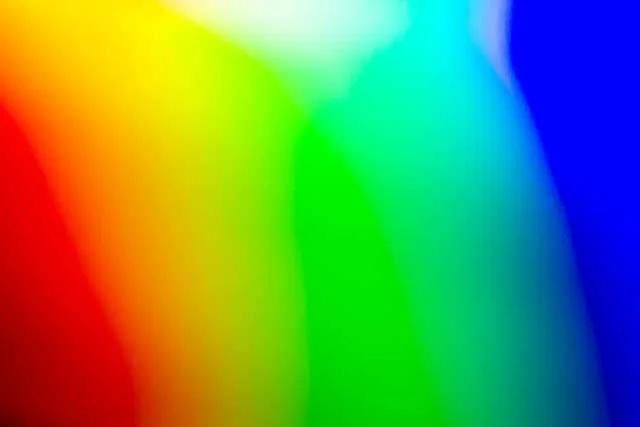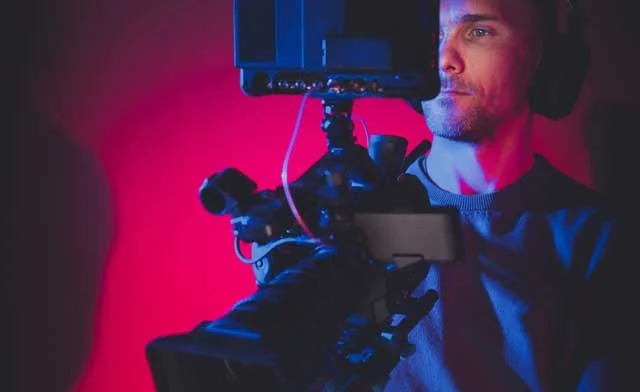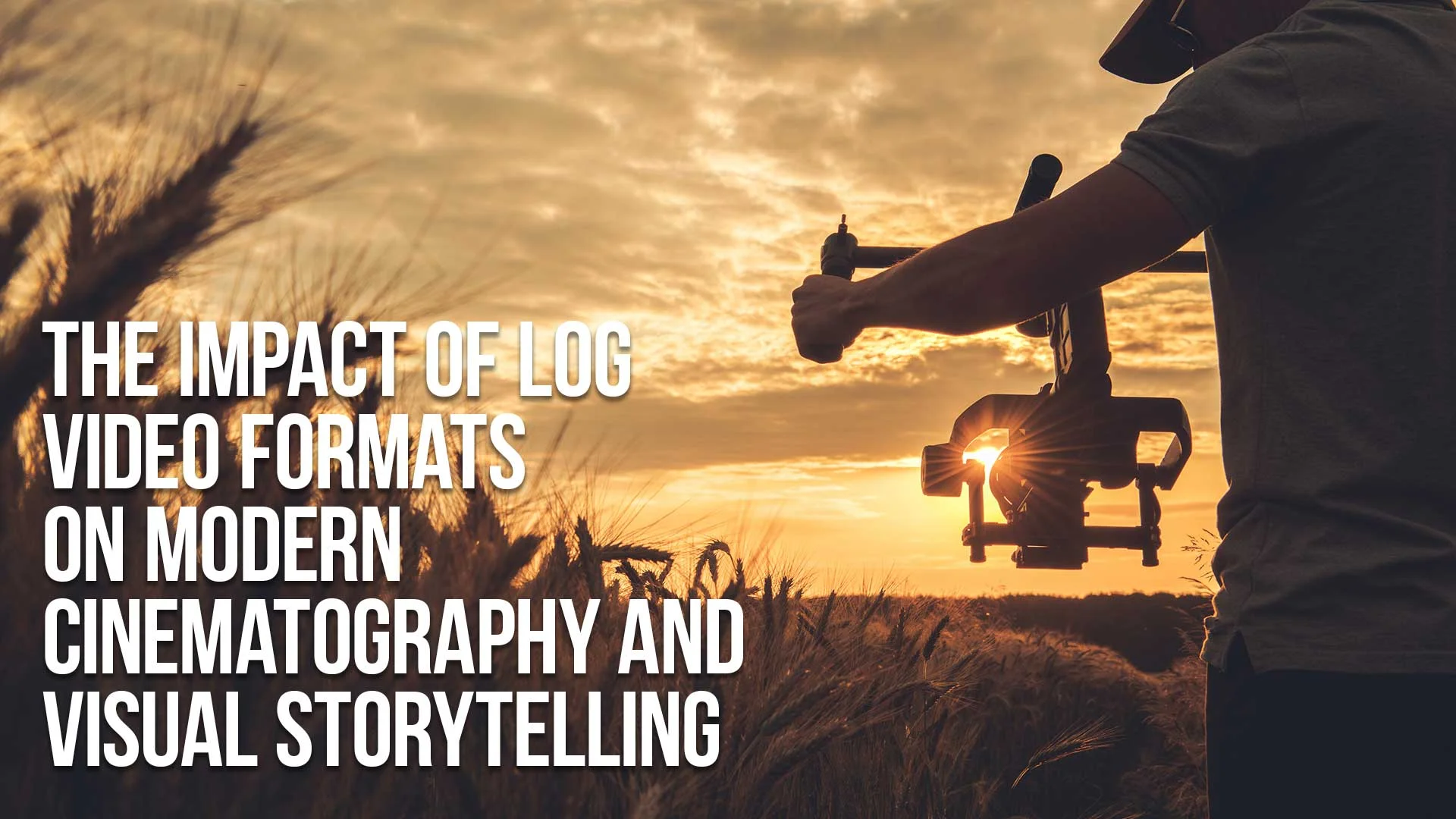Table of Contents
- The Rise Of Log Video Formats
- Log Vs. Linear Video Formats
- Log Format Technical Explanation
- Dynamic Range And Color Grading
- The Role Of Log Formats In Visual Storytelling
- Popular Log Formats In Modern Cinematography
- Real World Applications For Log Video Formats
- Balancing Technical Challenges With Artistic Vision
- Software And Hardware Requirements For Log Format Video
- The Future Of Log Video Formats And Cinematography
- Log Formats In Cinematography FAQ
The Rise of Log Video Formats
Log video formats have revolutionized the way filmmakers capture and process footage.
These formats provide a broader dynamic range, allowing for greater detail and flexibility in post-production.
With log video, cinematographers can achieve more realistic and visually stunning results.
Log vs. Linear Video Formats
Linear video formats have limitations when it comes to dynamic range and color depth.
Log formats, on the other hand, record data in a logarithmic scale, preserving more details in shadows and highlights.
This offers significant advantages in color grading and visual storytelling.
Log Format Technical Explanation
Log video formats work by capturing a wider range of light and color values from the scene being filmed.
Unlike standard video formats that record light linearly, Log formats use a logarithmic curve.
This means they're better at recording different shades of light and dark, which is especially useful in high-contrast scenes.
This feature provides filmmakers with more flexibility when they color grade their footage later on.

Dynamic Range and Color Grading
A key feature of log video formats is their ability to capture an extensive dynamic range.
This enables cinematographers to retain more information from a scene, resulting in richer colors and smoother gradients.
With log formats, color grading becomes a powerful storytelling tool.
The Role of Log Formats in Visual Storytelling
Log video formats open up new creative possibilities for filmmakers.
The flexibility in post-production allows for precise control over the visual narrative, enhancing the emotional impact and storytelling potential of each scene.
Popular Log Formats in Modern Cinematography
Numerous log formats are available today, with camera manufacturers offering their own proprietary codecs.
Some popular log formats include Canon's C-Log, Sony's S-Log, and Panasonic's V-Log.
Each format has its unique characteristics and benefits, providing filmmakers with various options to suit their needs.

Real World Applications for Log Video Formats
Log video formats have been a game changer in films and commercials where visual storytelling is key.
For example, directors in blockbuster movies use Log to ensure the picture quality is top-notch, even in scenes with tricky lighting.
It's also used in commercials to make products pop and look appealing.
The flexibility of Log video formats in post-production color grading helps filmmakers achieve the desired mood and visual effects.
Balancing Technical Challenges with Artistic Vision
While log video formats offer incredible creative potential, they also come with technical challenges.
Cinematographers must carefully balance their artistic vision with the practical considerations of data management, noise reduction, and color correction in post-production.
Software and Hardware Requirements For Log Format Video
To work with Log video formats, filmmakers need specific software and hardware.
On the software side, color grading tools likeDaVinci Resolve or Adobe Premiere Pro are essential for tweaking the colors and making the footage look natural.
For hardware, a camera capable of recording in Log format, and a high dynamic range (HDR) monitor to accurately display the colors, are crucial.
These tools together enable filmmakers to fully exploit the benefits of Log video formats in their projects.

The Future of Log Video Formats and Cinematography
As technology continues to advance, we can expect log video formats to further evolve, offering even greater dynamic range and color depth.
This will undoubtedly continue to shape the future of modern cinematography and visual storytelling.
Log Formats in Cinematography Frequently Asked Questions
What is a log video format?
A log video format is a type of recording format that uses a logarithmic scale to capture a wide dynamic range and more detail in shadows and highlights. This allows for greater flexibility and control in post-production, particularly during color grading.
How does a log video format differ from a linear video format?
Linear video formats record data in a linear scale, which can result in a limited dynamic range and less detail in shadows and highlights. Log formats use a logarithmic scale, preserving more information and providing a broader dynamic range for better image quality and control during post-production.
Why is dynamic range important in cinematography?
Dynamic range refers to the range of luminance values in an image, from the darkest shadows to the brightest highlights. A wider dynamic range allows cinematographers to capture more detail and accurately represent the visual nuances of a scene, resulting in more realistic and visually engaging footage.
What is color grading, and why is it important in visual storytelling?
Color grading is the process of adjusting the colors, tones, and contrast of footage during post-production. It plays a crucial role in visual storytelling, as it can enhance the mood, atmosphere, and emotional impact of a scene, helping to convey the filmmaker's vision more effectively.
What are some popular log video formats?
Some popular log video formats include Canon's C-Log, Sony's S-Log, and Panasonic's V-Log. These formats are proprietary to their respective camera manufacturers and have unique characteristics that suit different filmmaking needs and styles.
What are the challenges associated with using log video formats?
Log video formats can present challenges in terms of data management, noise reduction, and color correction. Filmmakers need to be aware of these challenges and take them into consideration when planning their shoots and post-production workflows. This may include the use of specialized software, hardware, and techniques to ensure optimal image quality and efficient data management.
How do log video formats impact visual storytelling?
Log video formats provide filmmakers with greater control over their visual narrative by offering more flexibility in post-production, particularly during color grading. This enables cinematographers to enhance the mood, atmosphere, and emotional impact of each scene, ultimately contributing to more engaging and impactful storytelling.
How can I choose the right log format for my project?
Choosing the right log format for your project depends on several factors, including your camera system, your artistic vision, and your post-production workflow. Research the different log formats available for your camera and consider their unique characteristics and benefits. It can also be helpful to consult with other filmmakers or test different formats to determine which one best suits your needs and style.
Can I use log video formats for all types of projects?
Log video formats can be beneficial for a wide range of projects, from feature films to documentaries and commercials. However, they may not be necessary or practical for every situation. For example, projects with tight deadlines or limited budgets might not be able to accommodate the extra time and resources required for log workflows. It's essential to carefully assess your project's needs and constraints before deciding to use a log video format.
Are there any alternatives to log video formats for capturing a wide dynamic range?
There are alternatives to log video formats, such as high dynamic range (HDR) video and raw video formats. HDR video captures a wide dynamic range using multiple exposures, while raw video formats record uncompressed sensor data, providing the maximum amount of information for post-production. Each of these alternatives has its advantages and drawbacks, so it's essential to understand their capabilities and limitations before choosing the best option for your project.

About the Author
Joseph Nilo has been working professionally in all aspects of audio and video production for over twenty years. His day-to-day work finds him working as a video editor, 2D and 3D motion graphics designer, voiceover artist and audio engineer, and colorist for corporate projects and feature films.
Parent Article:
Log Video Formats Reference Guide
Related Articles:
The Evolution of Log Video Formats
Demystifying Log Video Formats
Log Video Formats vs. Traditional Video Formats
Top 10 Log Video Format Cameras
Color Grading Techniques for Log Video Formats
The Impact of Log Video Formats on Modern Cinematography
Mastering Post-Production Workflows for Log Video Formats
Best Practices for Archiving and Storing Log Video Format Files
Video Editing Related Posts
Adobe Creative Cloud for Video Editing
Top 10 Video Editing Software for Mac
The Benefits of Dual-Monitor Setups for Video Editing
How to Choose the Right Video Editing Monitor for Your Needs
Best Monitors for Video Editing
Best Video Editing Software in 2023
Best Mac for Video Editing in 2023
(Almost) 50 Mistakes Every New Video Producer Makes
Breakthrough AI Tools: Elevate Your Video Production Game!
- The Rise Of Log Video Formats
- Log Vs. Linear Video Formats
- Log Format Technical Explanation
- Dynamic Range And Color Grading
- The Role Of Log Formats In Visual Storytelling
- Popular Log Formats In Modern Cinematography
- Real World Applications For Log Video Formats
- Balancing Technical Challenges With Artistic Vision
- Software And Hardware Requirements For Log Format Video
- The Future Of Log Video Formats And Cinematography
- Log Formats In Cinematography FAQ
Parent Article:
Log Video Formats Reference Guide
Related Articles:
The Evolution of Log Video Formats
Demystifying Log Video Formats
Log Video Formats vs. Traditional Video Formats
Top 10 Log Video Format Cameras
Color Grading Techniques for Log Video Formats
The Impact of Log Video Formats on Modern Cinematography
Mastering Post-Production Workflows for Log Video Formats
Best Practices for Archiving and Storing Log Video Format Files
Video Editing Related Posts
Adobe Creative Cloud for Video Editing
Top 10 Video Editing Software for Mac
The Benefits of Dual-Monitor Setups for Video Editing
How to Choose the Right Video Editing Monitor for Your Needs
Best Monitors for Video Editing
Best Video Editing Software in 2023
Best Mac for Video Editing in 2023
(Almost) 50 Mistakes Every New Video Producer Makes
Breakthrough AI Tools: Elevate Your Video Production Game!
